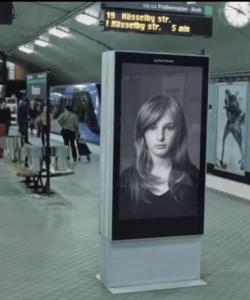We are taught over and over again in our marketing and communications classes how important it is to build a relationship with the customers. And we have also seen time and time again how emerging media channels like Facebook and Twitter contribute to a more engaged, personal and positive customer relationship. But, the question I’m posing here is, are ALL digital channels reciprocal?
Forget social media and the all too common Facebook and Twitter feeds that allow marketers to comment directly back to customers. Let’s talk about video, micro-video (i.e. Vine, Instagram), mobile (smartphone, etc.), wearable technology (Apple Watch, Google Glass), digital outdoor advertising (i.e. interactive billboards). Are these methods reciprocal? Can consumers respond/provide feedback with the same ease that you can via Facebook and the like?
My initial thought is yes! Two-way communication is what makes these types of mediums thrive as they constantly feed and cultivate the customer relationship, but let me identify a few examples to drive home my point.
Video/Micro-Video:
According to Dr.King with 1to1Media, “Simply posting videos is not social video marketing. Certainly, creating compelling content will increase the likelihood of sharing, but it’s not enough. Urge viewers to comment on, like, and share your videos through their own social networks. While these functions are built into the YouTube platform, don’t assume consumers will take the plunge on their own. Like any other marketing channel, include a clear call to action and readily available sharing icons and links,” (2014).
Additionally, Dr. King mentioned the importance of creating an emotional connection with customers through these videos saying: “Consumers find how-to and product videos quite helpful, especially if they want to make sure they’re buying the right thing and using it properly. But as important as these are, product videos won’t capture people’s hearts. Consumers have shown that they can be very receptive to authentic, personal messages about companies. To tap into this, think about ways to bring your company to life. Use video to explain how you incorporate customer feedback. Show how your products make a difference. Illustrate how consumers use your products in unique ways. These don’t have to be highly polished; it’s the message that matters.”
For instance, Mini (as in Mini-Cooper, the car manufacturer), has been extremely successful using the 15-second Instagram video feeds to answer customer questions. It began with an integrated social media campaign asking customers “if they had any questions for the little car.” This turned into a series of response videos,“each of which attracted a decent number of views and comments. Note how each video stands alone, and wraps up its story within the time allowed.”
Not only did Mini ask for customer’s feedback, but then they used a new medium to respond to their questions in a relevant and refreshingly cool way! Three cheers for Mini!
Digital Advertising/Interactive Billboards:
Interactive billboards are a really cool, new concept that have recently peaked my interest. One of the more popular interactive billboards is the one for British Airways. This brilliant advertising campaign uses a moving screen placed at the airport. It is programmed specifically so that when a British Airways flight takes off, the child on the screen walks over towards the runway and points to the plane! Corresponding text tells you the flight number and where the plane is heading.

Another one that I thought was extremely clever was a billboard found in Sweden’s rail stations. The interactive billboard started out as a shampoo advertisement for Apolospohy in which advertisers “rigged up sensors to a Raspberry Pi computer and linked it to a billboard that featured a woman’s head. When the sensors picked up an approaching train in the subway tunnel, they triggered a video, which showed her hair blowing as if in response to the rush of air that arrived with the subway cars.”

Piggybacking on that concept, another ad agency “tweaked the ad to help in the fight against cancer.” The ad basically does the same thing when a subway car arrives, but “there’s a surprise ending that truly stops people in their tracks,” (Franco, 2014). The woman’s hair literally blows away to symbolize a woman who has lost her hair to cancer. This ad ran in one of Stockholm’s rail stations and travelers reactions were videotaped “in the hopes that the video would go viral and bring awareness of the need to support the Swedish Childhood Cancer Foundation.”
With a total of almost 4 million view and multiple articles on the ad, I’d say it’s done a pretty good job achieving reciprocity.
By thinking of digital channels as reciprocal, marketers can “build deep, enduring relationships with our customers at an individual, personalized level, create engaging experiences tied together across channels and time at scale and drive conversions and get insight into spend and effectiveness.”
What other examples have you seen of emerging media creating a reciprocal relationship?